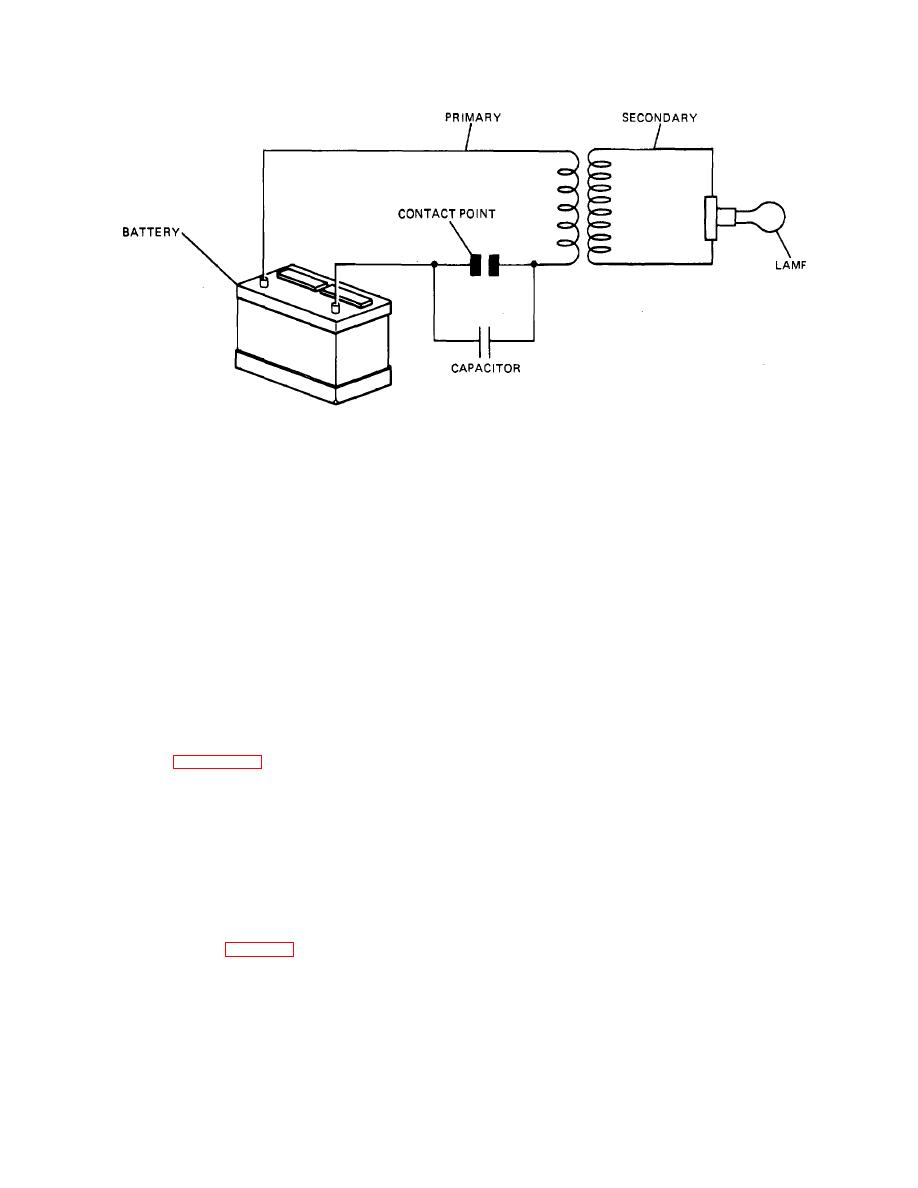
| Tweet |

Custom Search
|
|

|
||
 TM 9-8000
Figure 15-1. Principles of Self-Induction
the current stops flowing, the magnetic field collapses.
storage place for the surge of current caused by the
This means that the lines of force are moving toward the
countervoltage during magnetic collapse. Instead of
wires from which they came. The lines of force are
arcing across the contacts, the current enters the
moving in the reverse direction from when the magnetic
capacitor.
buildup took place. This means that the countervoltage
(2) The capacitor consists essentially of a pair of
induced in the adjacent wire loops also will be reversed.
metallic plates separated by insulating material. In actual
Because it is reversed, it is in the same direction as the
construction, the automotive capacitor is made up of two
original voltage.
The countervoltage opposes a
long strips of lead or aluminum foil wrapped into a
decrease of current.
The countervoltage always
winding with insulating paper between them. One strip of
opposes any change in voltage, any change in current
foil is connected to the capacitor can, the other is
flow. During buildup, it opposes the increasing current
attached to a terminal.
flow. During collapse, it opposes any decreasing
current flow.
(3) In operation, the foil strips serve as a large
area into which free electrons (electric current) can
(7) The effect of countervoltage during magnetic
move. For instance, suppose that the contacts are Just
collapse can cause severe arcing at the switch, or
opening. This interrupts the current from the battery, and
contacts, used to open the circuit of the electromagnet.
a magnetic collapse starts. With the movement of the
For example, in figure 15-1, when the contacts are
collapsing lines of force across the turns of wire in the
opened, the countervoltage produced by the collapsing
electromagnet, a countervoltage is produced in the
magnetic field will be great enough, if the electromagnet
electromagnet that attempts to continue the current flow.
has enough turns, to push current across the opening
However, instead of this current flowing across the
contacts so that an arc occurs. This arc not only tends to
contacts in an arc, it flows into the capacitor. One of the
burn the contacts, it also slows down the speed of
foil strips (the one connected to the negative side)
magnetic-field collapse. The use of a capacitor (formerly
accepts large numbers of free electrons (flow of current).
referred to as a condenser) across the contacts protects
These free electrons flow onto the strip. As they do so,
them from arcing and speeds up the magnetic-field
they give the strip a negative charge. This negative
collapse.
charge repels electrons from the other strip so that it
b. Capacitor Action (Fig. 15-2).
becomes positive.
(4) The capacitor tends to prevent an arc at the
(1) The capacitor has the capacity to store
contacts. It also tends to hasten the collapse of the
electrical charges briefly; therefore, it acts as a
TA233585
15-2
|
||
 |
||